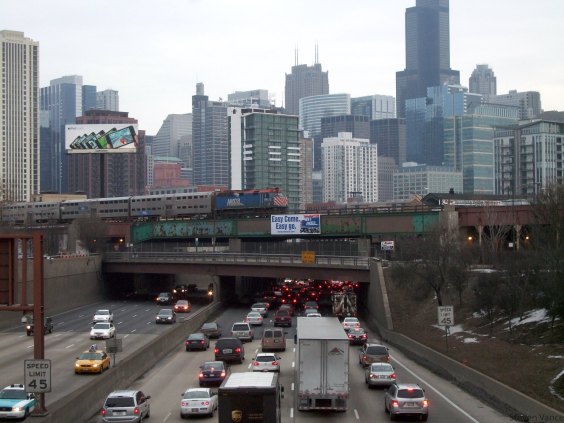 Flickr photo: Thomas Hawk
Flickr photo: Thomas HawkFor a second straight MTA board meeting, changes to the 2-Clement dominated both the board's discussion and public comment. Funston Avenue residents and Congregation Beth Shalom members showed up in force to voice safety and noise concerns about a new bus terminus at either location. MTA directors expressed reservations about both options, acknowledging the community concerns and beseeching Transit Effectiveness Program project manager Julie Kirschbaum to offer an alternative that avoids either scenario.
For a second time, the board delayed action on the matter, requesting more information about alternatives. Without any input from a single 2-Clement rider, the board opened the door to considering an alternative that would not provide an easy connection to nearby major bus lines.
The MTA plans to shorten the 2-Clement from 33rd Avenue to Park Presidio Boulevard to save money and improve service on parallel lines, a recommendation originally proposed in the Transit Effectiveness Project recommendations. In order to accomplish these savings and service upgrades, the MTA needs to find a new terminus for the line. The two proposed terminuses were the finalists from a larger pool, and were the only options that MTA staff concluded would provide connectivity to the 28-19th Avenue and 38-Geary as well as minimize impact on residents and businesses. The Geary connection will be especially critical once the 2 is shortened.
Neither residents nor business owners tend to embrace bus terminuses on their block, but the two options - on Clement Street in front of Congregation Beth Shalom and on Funston Street just north of Geary Boulevard along the Park Presidio median - were chosen because they don't front onto building entrances and are close to the 28 and 38.
Several members of the board appeared open to sacrificing connectivity in order to appease residents. "I'm a little concerned that we're over-blowing the connectivity issue here," said director Cameron Beach. "I think that the connectivity issue is an important one, but not a critical one."
Director Malcolm Heinicke echoed that view, requesting that staff study how many riders are making a similar transfer now. "I want to be sure that the connectivity that's leading to this proposal" is a significant factor, Heinicke said. "We're proposing to allegedly make life a lot more difficult for a lot of citizens, and it's hard to make a decision without that information."
Board Chairman Tom Nolan agreed that connectivity statistics would be a "critical factor in making a decision." MTA executive director Nat Ford said the MTA would incorporate connectivity studies into the staff's review before the next board meeting, and again in more detail as part of a six-month review the agency will complete after changes are in place.
Ford urged the board to make a decision as soon as possible, since the resulting savings are already factored into the agency's budget, and the next driver signup period is approaching, which requires all routes to be finalized. "We're coming up against that final timeline," said Ford.
Nolan concurred with Ford: "I think we need to do our duty the next time we meet," on October 20.
The board voted against the Funston option today, which only Nolan supported, but they left the Clement Street/Congregation Beth Shalom option on the table, and opened up the possibility of using a terminus that's farther from the 38-Geary and 28-19th Avenue, an option they've asked MTA staff to study further.
Perhaps most striking was the absence of 2-Clement riders speaking at the meeting. Heinicke said riders would be noticed of the potential changes before the next meeting, since the board could choose a terminus option that will not be close to the 28 and the 38.
"If we're going to do changes on lines that will affect connectivity, you have to notice that as well," Heinicke said after the meeting. "If those connectivity concerns are real, and if people are really going to be making transfers from the 2 to the 28 or the 38, then those are important. This is a transit agency. My question today was just to make sure that there are significant connectivity benefits to the proposals, so we can balance them against the community concerns we're hearing."
For now, Heinicke says he's skeptical about connectivity issues due to the lack of feedback he's received from 2-Clement riders:
"When we had the first round of hearings, we got 100 emails from 14th Avenue residents, 100 from Funston Avenue residents, and I got one single email from someone who rides the 2. In fact, one single email from a rider who said he was concerned about the connectivity issues, but didn't say personally that he had experienced them. So, again, connectivity is important, but I don't want to make large community tradeoffs for unknown or phantom connectivity issues."
That lack of protest, of course, may be due to a lack of proper notice, something the Funston Avenue residents themselves complained about at the September 1 meeting. If the MTA does not give proper notice to 2-Clement riders before the next meeting on October 20, they still may get something far from the whole picture.





